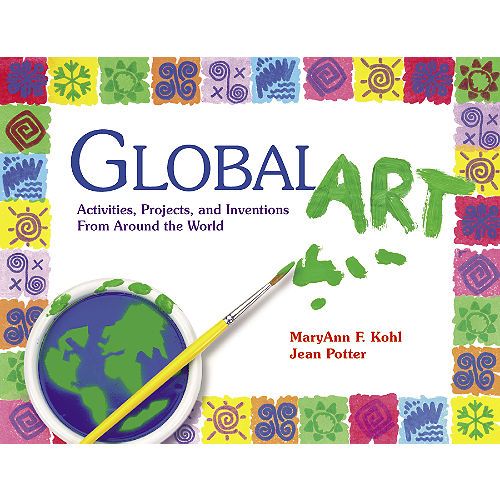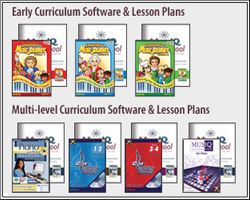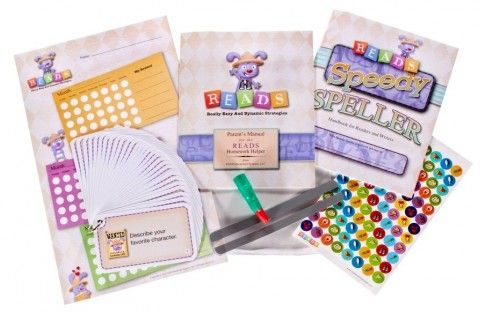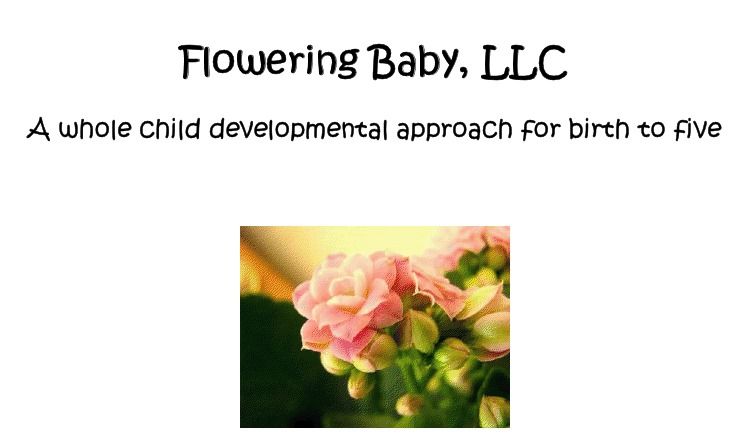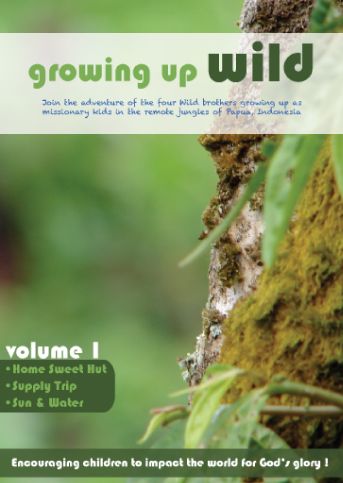So, you want to start 'doing school' with your little one and you don't know where to start?
You want something that
is school-because they are learning school concepts-but you don't want it to
feel like school-because they are young and who needs school at such a young age?
You want someone to layout your days for you, not to be ridged, but to keep you on track and make sure you 'catch everything?'
You want something that takes minimal prep work, but still offers a lot.
You also want a curricula that requires minimal financial investment, uses things you
already have, and books that you own or can check out at the library?
You feel like you are wishing on a star, because this doesn't exist...
Well, actually, it does :).
Over the last few weeks we have been reviewing a little known product called
Flowering Baby that is exactly like I just described above.
Created by homeschooling mom Martha Saunders and her mother Carolyn Schulte, Flowering Baby offers curriculum for babies all the way up through age 5. Martha was an auditor turned stay-at-home, homeschooling, mom, who wanted to provide a well rounded education for her young son. The Flowering Baby curriculum is based on what she taught her son in her home. She has expanded it and is sharing it with other homeschooling moms.
Blending Classical, Charlotte Mason, and Unit Study styles of learning, Flowering Baby is a whole child approach to learning. It offers laid back lessons that are a mix of play and educational activities.
Each of the five age levels offer age appropriate activities. We were sent for review the entire curricula! We focused on the age 3-age 4 lesson plans and worked on the activities with Mini Cooper. I had intended to try and do some of the activities for Explorer, but she usually naps during our school time and I haven't figured out another time to work on things with her.
Here are a couple of day's guides:
Day 1:
ABC's: Sing the ABC song. Select three sequence card sets and ask him to put the cards in the
proper sequence.
Math: Count out loud from 1 to 5, have your child count along with you. Repeat.
New Year's: Discuss the New Year. Talk about the calendar, months and seasons. Explain and
tell your child what year it is and what year it was yesterday.
Blue: Read book. Dress all in blue for the day. Color a picture only using shades of blue.
Triangles: Using masking tape make a large triangle on the floor. Walk on the lines and discuss
triangles – they have three equal sides and three corners. Name things that are shaped like a
triangle (piece of pizza, wedge of watermelon, piece of toast cut in half, or a Christmas tree).
Day 2:
ABC‟s: Sit next to your child; you will both need a piece of paper and a crayon. Tell him you
are going to draw circles today. Show him on your paper how you draw circles and then ask him
to draw circles. You may guide his hand at first if needed. Note: if individual circles are too
difficult it might be easier to draw spirals.
Math: Use some small manipulates (blocks, bears, or cars) and count out loud from 1 to 5 set
the items in a line. Always work from left to right. Repeat.
Blue: Read book. Using household items arrange several blue items by shade, from light to dark.
Read: Three Billy Goats Gruff: Using blocks and farm animals (goats if you happen to have
them) repeat the story acting it out.
Ears: Read book. Discuss our ears and that they are one of our five senses. What are some
things you hear in the house? Go outside and identify sounds you hear.
On the Flowering Baby Website, you can view samples of each set of curricula. The page for age 3-age 4 is
here. They offer a couple samples of weeks so you can get a better feel for what to expect from the guides.
I realized I didn't get as many photos of us using the curriculum as I would have liked, but here are some outtakes:
Ordering sequencing cards.
Counting to ten, we used the bead stair.
Drawing a picture of our family during our family unit.
This photo represents one of the things I liked most about Flowering Baby. Many times, the guide would encourage me to ask Mini Cooper to retell the story. Well, turns out, she really likes storytelling. She is also very good at it. Ever since we started Flowering Baby, she has been volunteering to tell me stories all the time! Here, she is telling me a Bible story.
Overall, my very favorite part of Flowering Baby was the excellent choice of books!
January's book list includes:
Blueberries for Sal by Robert McCloskey
Blue Sea by Robert Kalan
Vincent’s Colors by The Metropolitan Museum of Art
The Five Senses: Hearing by Maria Rius
The Listening Walk by Paul Showers
Polar Bear, Polar Bear by Eric Carle
The Hat by Jan Brett
The Snowman by Raymond Briggs
Berenstain Bears: Too Much Junk Food by Stan Berenstain
Cooking With the Cat (reader 1) by Dr. Seuss
Healthy Snacks by Mari Schuh
Museum Shapes by The Metropolitan Museum of Art
The Neighborhood Mother Goose by Nina Crews
Three Billy Goats Gruff by Paul Galdone
Unfortunately, our library didn't have very many of the books on this list, but they did have Three Billy Goats Gruff. It is now on our 'to buy' list because once we read it, we had to read it every.single.day. I think she even slept with it one night. I know she has it memorized. Shhh don't tell her I returned it to the library today. Our time was up!
The Snowman we own, but had never read. She loved it too!
As part of our unit on families, we read the Kissing Hand and When the Relatives Came. Again, she loved them!
And speaking of our family unit, each month includes a daily guide for around 15 days of lessons. Then, you would choose two of the theme units (there are 12) to do each month. The author has made suggestions of which month to use which unit, but it's up to you which you choose. The subjects for 3 year -4 year olds include:
Aquarium & Arctic Life
Dinosaurs
Musical Instruments
Transportation
Farm Animals
Gardens
Family
Easter and Spring
and many more!
So what did we think of Flowering Baby?
I really think that Flowering Baby is a well written, thorough curriculum that is fun and easy to follow. I think it covers pretty much everything I would want to cover at this age {and they give suggestions for curriculum to challenge the child further}. I think that the activities are age appropriate regardless of which guide you choose. Overall, I would recommend it to anyone looking for a curriculum for their young child.
That said, I don't feel it is a good fit for us. And here is why: It's a little bit too thorough. It is lined out what to do each day, and each day builds on the next. I wasn't always able to get the library book noted in time for the day (I had to order them and some are still not in). Other days, we couldn't do everything on the list (some of the field trips in the theme guide, for example). Other times, Mini Cooper was either to advanced, or not quite up to the task at hand so I would feel the need to skip something-which would throw off the curriculum. I know that the curriculum says it is flexible-and it is. It's just I'm really not, lol! If I'm going to follow a curriculum, I want to actually be able to do it. It frustrated me that I couldn't always stick with each day.
Another issue I had was that the day's level of work seemed to be inconsistent. Some days would be full of 3 or 4 books to read, and other days, just 1. It seemed as though-at least on the 3 book day-that the day didn't flow very well and that each subject was written independently of one another and then meshed together. It also made the time of each day run differently and it was hard to know how much time to set aside.
We already have a pretty good thing going here, but I was curious to see if Flowering Baby would add something that was better. For now, I don't think so. Looking back, I really wish something like Flowering Baby would have been around when I first started homeschooling, though. It was EXACTLY what I was looking for. If I ever have a time when I am completely unable to plan our own schooling I will very likely come back to Flowering Baby. For example, if we were to have a new baby or decide to make a move I would-for sure-come back to this.
I'm recommending Flowering Baby to the new homeschooler, to the older homeschooler that is completely focused on their older children and does not have time to set up a curriculum for their younger child, and also to the mom who simply wants to prepare their child for public school, but do Preschool at home.
Flowering Baby
retails for $132.00 if you would like to purchase the entire birth to five curriculum. If you would like to purchase an age specific guide, they are sold for Birth to 1, 1-2 years or 2-3 years for $30.00 and age 3-4 or 4-5 for $38.00. Flowering Baby is offering our readers 10% off by using the code 'Blog10'. The curriculum is sold on a disk, or can be downloaded in PDF form {please note that the PDF form is only available through Currclick-link on the Flowering Baby website-and the discount code can not be used on Currclick purchases}.
I hope this gives you enough information to help you consider Flowering Baby for your home! If you have any questions, feel free to ask me. I'll do my best to answer!
If you would like to see what other families thought of the Flowering Baby curriculum (and get glimpses of some or the other age groups). Check out the crew blog!

Thanks so much for stopping by!
God Bless,
Disclaimer: As a member of the Schoolhouse Review Crew, we received a copy of the entire Flowering Baby Program. We agreed to use the program in our home and write this review. All opinions expressed are our own. We were not compensated in any other way. I am disclosing this as part of the FTC regulations.


